New RAF Uniforms
Stable belts
In 23 years I never owned one. But then (discounting IOT) I probably only spent about ten weeks not wearing a flying suit so had little need for one.
BV
Standing by…
BV
Standing by…
Interesting how the Israeli Defense Forces, probably the most operationally effective fighting force on the planet, has a pretty simple uniform system that only gets changed to improve lethality and survivability....
Would that be too simple or is there a need for it to be uniquely ours?
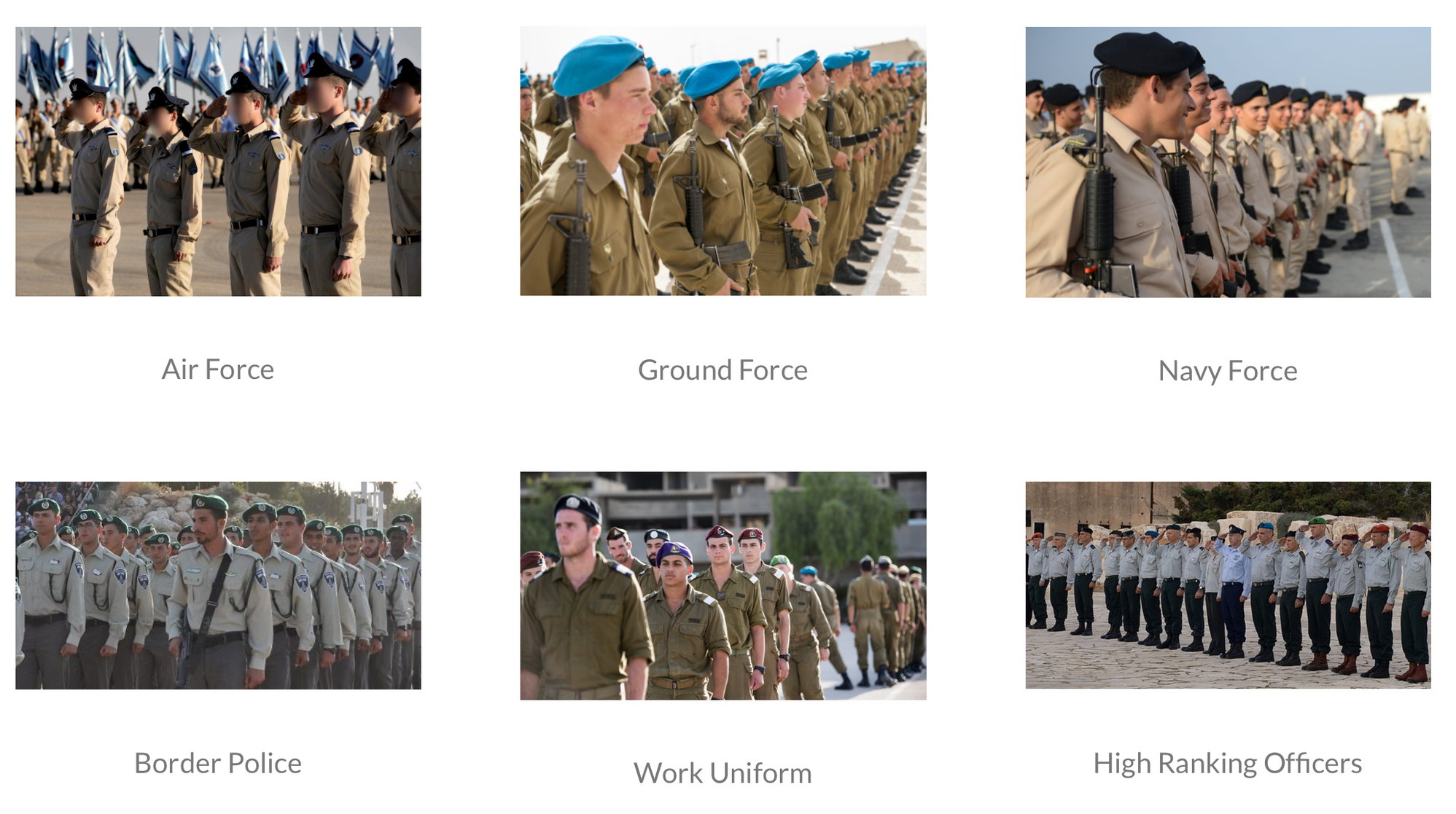

One simple question; suppose Amazon were trying to sell them, do you suppose they might be displayed a bit better? Leaving aside the merits, could the display have been any more unappealing and amateur? Just as well the big stuff is all so well under control…..
Join Date: Feb 2011
Location: Great Britain
Age: 51
Posts: 340
Likes: 0
Received 11 Likes
on
5 Posts
Variants of stable belts have been around for years. Prior to the claret, light blue and dark blue ones introduced by the Rock Apes in the 1970s, then the RAF wore their very own blue-grey belt, from the 1937 pattern webbing, over War Service Dress as modelled here by Cpl Marsh in Get Some In:
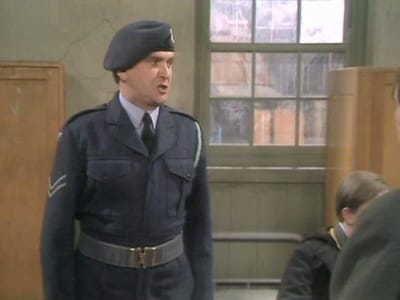
However, at the same time a RAF ceremonial belt in white was issued with a very recognisable buckle in 1937 too:
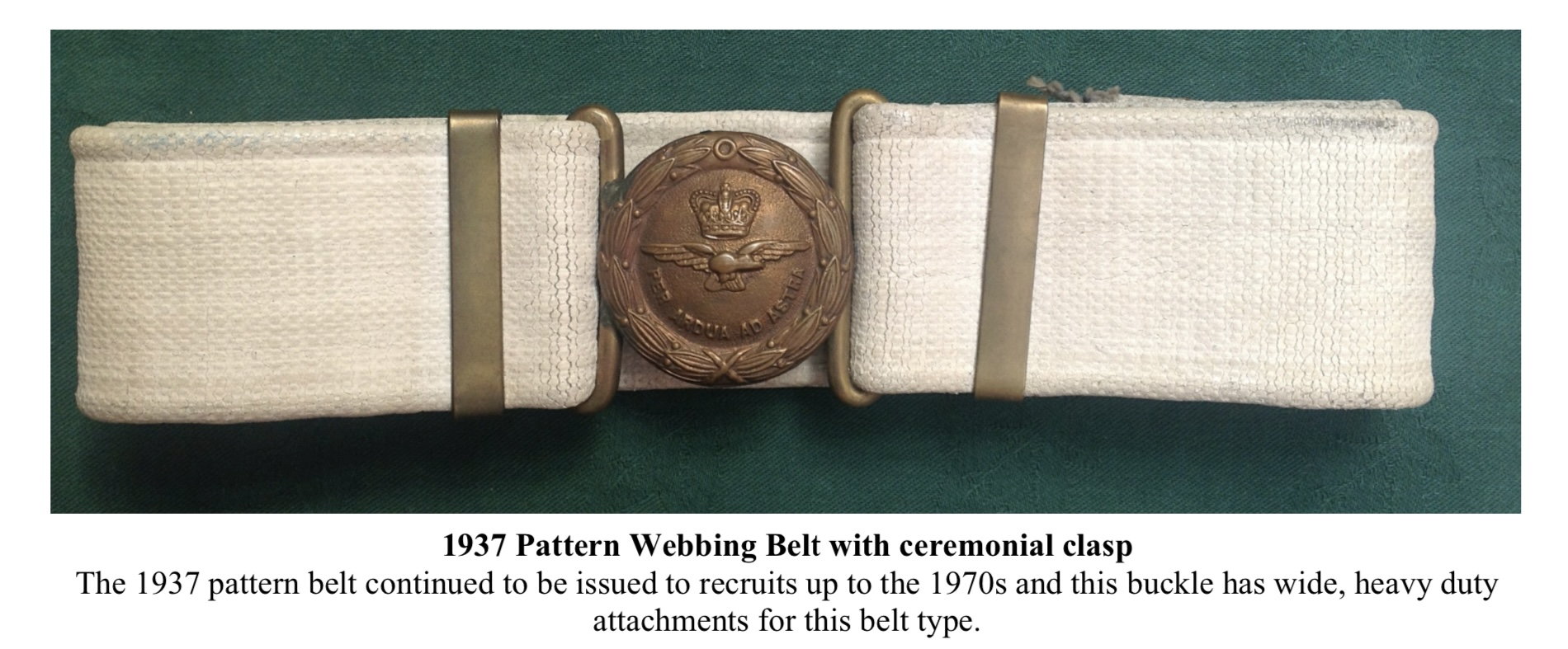
The more familiar stable belt with the claret (supposed to be the Army), the thin light blue line (supposed to be the RAF) and the dark blue (supposed to be the RN) was introduced by the RAF Regiment in 1970. The colours, the same used on TRFs and previously in the 1920s on RAF head dress, are now enshrined in the RAF. However, the first stable belts had the side fastening - as per all stable belts designed for horse riding and no bulky buckle to rub on the horse during the mount/dis-mount - it was later that the RAF Regiment developed their own belt buckle. Some of the RAF Regiment Squadrons even had their own colour of stable belt in the early days, but uniformity took over and the familiar Rock Ape belt was rolled out in the mid to late ‘70s. Further the RAF Coppers developed their own belt buckle and originally had a black/red stripe only, but again the claret, light blue and dark blue material was used too. The rest of the RAF were then allowed to wear the side fastened stable belt as the Rock Apes had their own now with their crossed rifle logo.
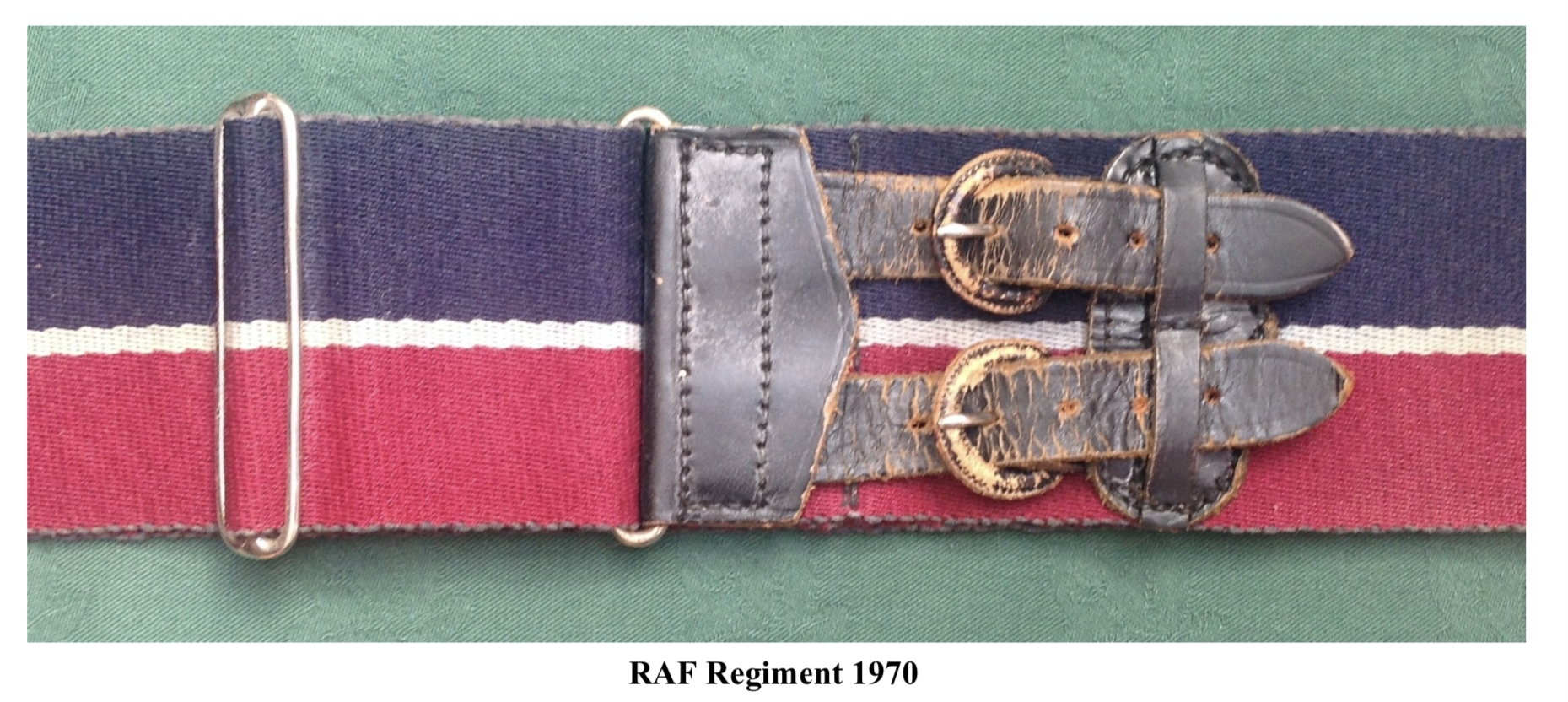
In the early 2000s then a new RAF logo’d belt buckle was released too. This mirrored the RAF Regiment and RAF Police buckles.
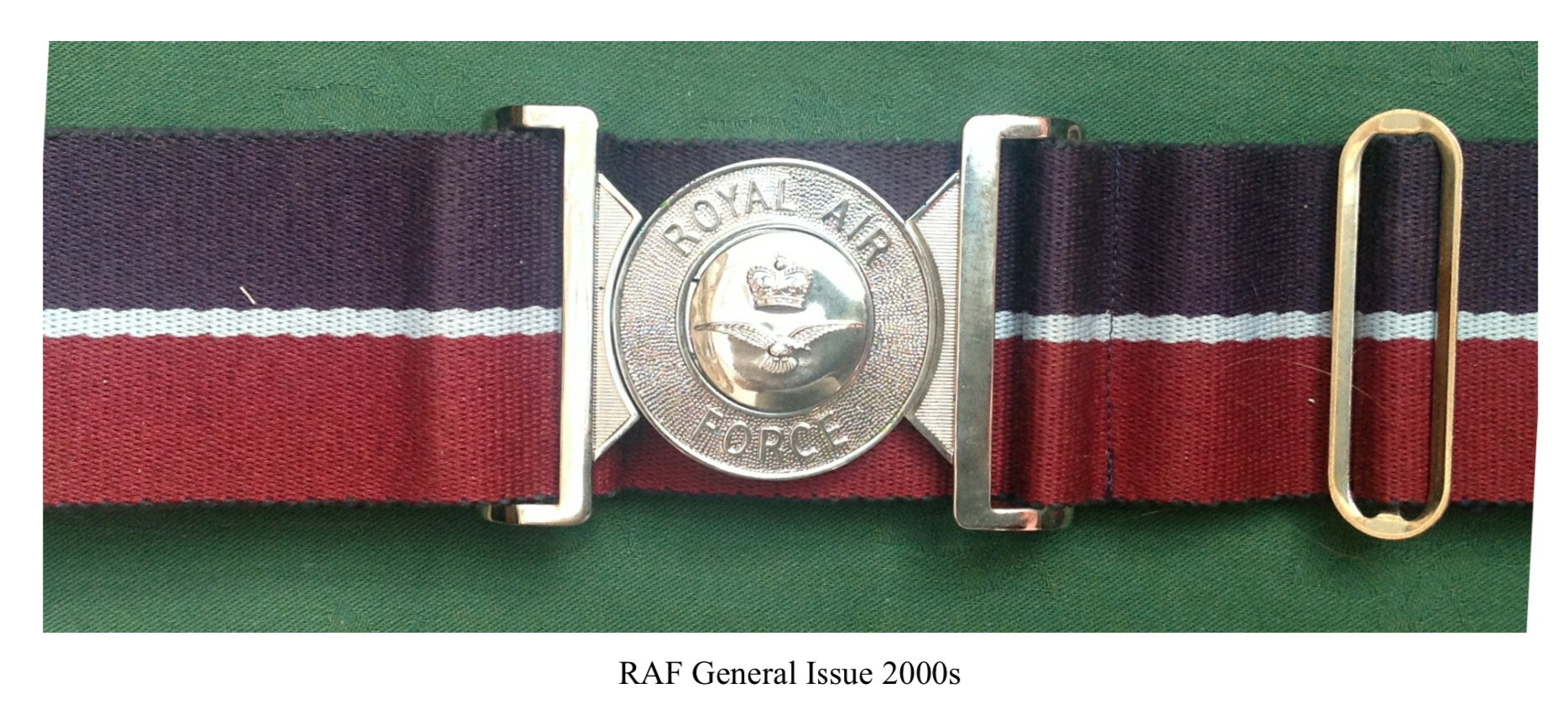
So, there is quite a bit of history behind the RAF stable belt. I actually quite like it as an RAF artefact and the colours do make us more recognisable to others that we are RAF. Worn with a barrack shirt and PCS trousers with suitable badges then the RAF identity is maintained. The only people I ever hear gripe about them are the ones that gripe about paying for any item of uniform; the same sort of people who won’t buy a Squadron badge or insist on wearing a beret because they won’t fork out for a smarter field service cap. Fairly strange behaviour from folks who are supposed to have pride in their Service and their appearance.

However, at the same time a RAF ceremonial belt in white was issued with a very recognisable buckle in 1937 too:

The more familiar stable belt with the claret (supposed to be the Army), the thin light blue line (supposed to be the RAF) and the dark blue (supposed to be the RN) was introduced by the RAF Regiment in 1970. The colours, the same used on TRFs and previously in the 1920s on RAF head dress, are now enshrined in the RAF. However, the first stable belts had the side fastening - as per all stable belts designed for horse riding and no bulky buckle to rub on the horse during the mount/dis-mount - it was later that the RAF Regiment developed their own belt buckle. Some of the RAF Regiment Squadrons even had their own colour of stable belt in the early days, but uniformity took over and the familiar Rock Ape belt was rolled out in the mid to late ‘70s. Further the RAF Coppers developed their own belt buckle and originally had a black/red stripe only, but again the claret, light blue and dark blue material was used too. The rest of the RAF were then allowed to wear the side fastened stable belt as the Rock Apes had their own now with their crossed rifle logo.

In the early 2000s then a new RAF logo’d belt buckle was released too. This mirrored the RAF Regiment and RAF Police buckles.

So, there is quite a bit of history behind the RAF stable belt. I actually quite like it as an RAF artefact and the colours do make us more recognisable to others that we are RAF. Worn with a barrack shirt and PCS trousers with suitable badges then the RAF identity is maintained. The only people I ever hear gripe about them are the ones that gripe about paying for any item of uniform; the same sort of people who won’t buy a Squadron badge or insist on wearing a beret because they won’t fork out for a smarter field service cap. Fairly strange behaviour from folks who are supposed to have pride in their Service and their appearance.
The following users liked this post:
This is an abstract from Psychological issues in military uniform design:
There are many reasons why getting uniform right is fairly important, the basics are in this abstract. It’s one more thing that RAF seems to have lost its way with. Our everyday uniforms have become bland and lifeless since the 1970s, the woolly pulley, the rain mac (replaced by the equally awful GPJ) and a distinct lack of any ability to display “insignia, decorations and so on”. The only time I normally get my decorations out are that I’m ordered to do a parade (funeral, jubilee, wedding, etc…) or I’m going for an interview with no tea or biscuits!
Military uniforms are standardized, distinctive forms of dress that distinguish soldiers and sailors from civilians. There are many psychological implications of military uniforms, including the importance of style, appearance and color, as well as insignia, decorations, and so on. These contribute to togetherness, orderliness and discipline, and add to the soldiers’ sense of camaraderie, cohesion, and esprit de corps. Some features contribute to formal patriotic displays. Other important human factors relate to practicality, functionality, utility, comfort, and bodily protection, which may affect soldier performance.
Join Date: Feb 2006
Location: Hanging off the end of a thread
Posts: 33,072
Received 2,940 Likes
on
1,252 Posts
I can understand the stable belt, as the uniform has probably been designed and approved by those that operate a desk, same as the original Woolley polley designed with a round neck for keeping you warm in the field then bastardised by the shiny tie brigade into an office wear, though it’s days were getting numbered with the we need to stitch our bloody wings on it by the insecure brigade, surprised they never did the same for their shirts and vests, after all, that could have simply been solved by sticking the parrot onto the shoulder rank slides as per the Sgt aircrew.
This is an abstract from Psychological issues in military uniform design:
There are many reasons why getting uniform right is fairly important, the basics are in this abstract. It’s one more thing that RAF seems to have lost its way with. Our everyday uniforms have become bland and lifeless since the 1970s, the woolly pulley, the rain mac (replaced by the equally awful GPJ) and a distinct lack of any ability to display “insignia, decorations and so on”. The only time I normally get my decorations out are that I’m ordered to do a parade (funeral, jubilee, wedding, etc…) or I’m going for an interview with no tea or biscuits!
There are many reasons why getting uniform right is fairly important, the basics are in this abstract. It’s one more thing that RAF seems to have lost its way with. Our everyday uniforms have become bland and lifeless since the 1970s, the woolly pulley, the rain mac (replaced by the equally awful GPJ) and a distinct lack of any ability to display “insignia, decorations and so on”. The only time I normally get my decorations out are that I’m ordered to do a parade (funeral, jubilee, wedding, etc…) or I’m going for an interview with no tea or biscuits!
The 'wings on woolly pully' nonsense started as a tongue-in-cheek joke by a Vulcan squadron Flt Cdr in the late '70s. Unfortunately someone took him seriously and we then had to stitch the cloth moth onto the wretched pullover. Wearing flying kit to and from work wasn't allowed back then, so it wasn't easy to escape having to wear the thing unless you wore the awful 'thunderbird jacket' instead!
That’s a nice white stripe! - to be worn on a camouflaged uniform? Very similar to the very obviously bright Blue Shirt we used to wear (with very shiny shoes) in the 80’s and 90’s - completely countering the use of camouflage….
Of course all this could be ‘solved’ with a decent beret and cap badge….like the current one?
Of course all this could be ‘solved’ with a decent beret and cap badge….like the current one?
downsizer - a stable belt isn’t an instant combat indicator of “prickness”, rather more someone’s attitude is. The stable belt is a personal expense item and so you don’t have to wear one, you can just go with the nasty nylon green belt (not allowed webbing belts anymore) with your PCS or the cheap blue belt with the brass buckle if you like.
mopardave - the ‘reserved’ thing is a bit of guff really. The RN and the Army have displayed all sorts of things on shirts, jumpers and jackets over the years. The RAF as the junior Service made a fairly strong start on uniforms and then it all went wrong around the 1970s and 1980s. Prior to this the RAF had a ceremonial dress, No 1 and RAF War Service Dress (originally created for Aircrew only in 1939/40, but was so popular it was rolled out to the other Branches and Trades in 1943) - sometimes incorrectly termed Battledress, here it is worn by ACM Tedder:

This was the No 2 Dress until 1975/76 when the “Woolley-Pulley” came along. Prior to this WSD went through a non-hairy variant and then the ‘72 pattern Thunderbird Jacket - all with medal ribbons, flying badges and other qualification badges (MRT, Para, Marksman, FMO, AS, etc…etc…). The dreaded wooley-pulley dispensed with everything in one go, with not even flying badges in the early days, and only a few stalwarts continued to wear the Thunderbird Jacket until the early 1990s when it too was replaced by the General Purpose Jacket (GPJ) - the latter, yet again, sans any medal ribbons, badges or other insignia. Here is the 72 pattern ‘Thunderbird Jacket’:
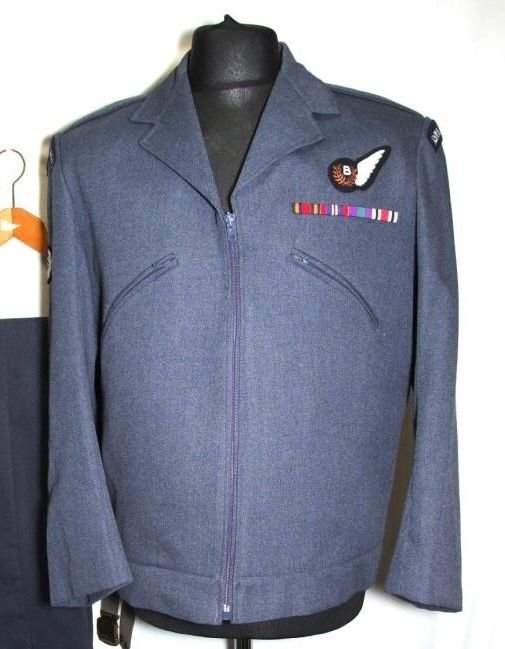
So really, the bland ness of the RAF uniform is something from the past 30 years or so. The previous 80 years has seen ribbons and badges on a daily basis. Why was that? It was done on the CHEAP, that is why. For Officers, who pay for uniform, they were trying to save a few quid and for the other ranks then the cost of Crown-tailoring with ribbons and badges was saved. So this was nothing more than doing it on the CHEAP and boy are we paying for it now - compared to RAC staff or bus conductors, you can understand why…
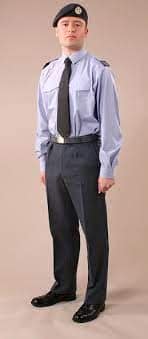
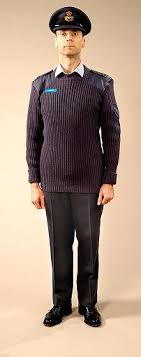

At least with the stable belt there is a little bit of colour that identifies us from afar as being in the Air Forces of the Crown!

mopardave - the ‘reserved’ thing is a bit of guff really. The RN and the Army have displayed all sorts of things on shirts, jumpers and jackets over the years. The RAF as the junior Service made a fairly strong start on uniforms and then it all went wrong around the 1970s and 1980s. Prior to this the RAF had a ceremonial dress, No 1 and RAF War Service Dress (originally created for Aircrew only in 1939/40, but was so popular it was rolled out to the other Branches and Trades in 1943) - sometimes incorrectly termed Battledress, here it is worn by ACM Tedder:

This was the No 2 Dress until 1975/76 when the “Woolley-Pulley” came along. Prior to this WSD went through a non-hairy variant and then the ‘72 pattern Thunderbird Jacket - all with medal ribbons, flying badges and other qualification badges (MRT, Para, Marksman, FMO, AS, etc…etc…). The dreaded wooley-pulley dispensed with everything in one go, with not even flying badges in the early days, and only a few stalwarts continued to wear the Thunderbird Jacket until the early 1990s when it too was replaced by the General Purpose Jacket (GPJ) - the latter, yet again, sans any medal ribbons, badges or other insignia. Here is the 72 pattern ‘Thunderbird Jacket’:

So really, the bland ness of the RAF uniform is something from the past 30 years or so. The previous 80 years has seen ribbons and badges on a daily basis. Why was that? It was done on the CHEAP, that is why. For Officers, who pay for uniform, they were trying to save a few quid and for the other ranks then the cost of Crown-tailoring with ribbons and badges was saved. So this was nothing more than doing it on the CHEAP and boy are we paying for it now - compared to RAC staff or bus conductors, you can understand why…



At least with the stable belt there is a little bit of colour that identifies us from afar as being in the Air Forces of the Crown!

Last edited by Lima Juliet; 28th Dec 2022 at 16:19. Reason: Add a couple of photos
downsizer - a stable belt isn’t an instant combat indicator of “prickness”, rather more someone’s attitude is. The stable belt is a personal expense item and so you don’t have to wear one, you can just go with the nasty nylon green belt (not allowed webbing belts anymore) with your PCS or the cheap blue belt with the brass buckle if you like.

This is an important issue to deal with along with why PTIs can't wear their PTI badge in No5s! I **** you not.
Thought police antagonist
Join Date: Jul 2003
Location: Where I always have been...firmly in the real world
Posts: 1,373
Received 120 Likes
on
87 Posts
The obsession with uniforms, and appearances, correlates very strongly with those equally obsessed with parades / drill / marching....a useful distraction from their own failings shall we say.
However, uniforms can prove entertaining.....arrived at an RE base in Germany to borrow a mine detector, quite why was never explained, and obviously we would be proficient in it's use....me, wearing a well frayed aircrew shirt of that era, my mate wearing a Heineken T shirt, one beret between us, and no rank tabs, plus those old green combat trousers, sea boot socks...and wellies...mud encrusted. The ensuing "conversation" in the guardroom was too good an opportunity to miss...so we didn't. Seemingly, the telephones wires to Bruggen, melted...sadly, our Boss at the time, a former CEGB hands on apprentice engineer solemnly assured the Army he would take appropriate action, which he did....with all the gravitas he could muster, he informed everybody at a beer call, we would, in future, take No1 HD / bulled shoes on every crash recovery....before offering his opinion as to the Army



